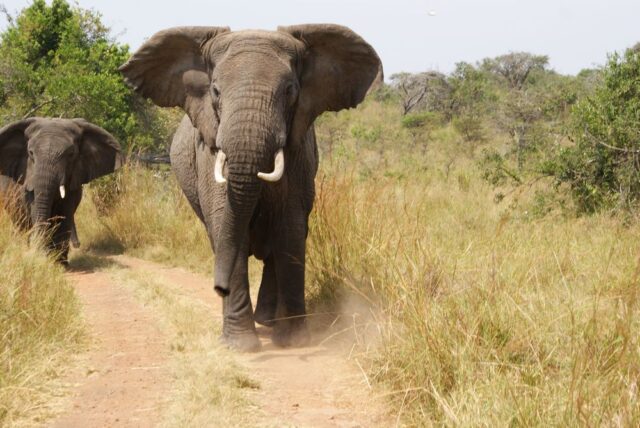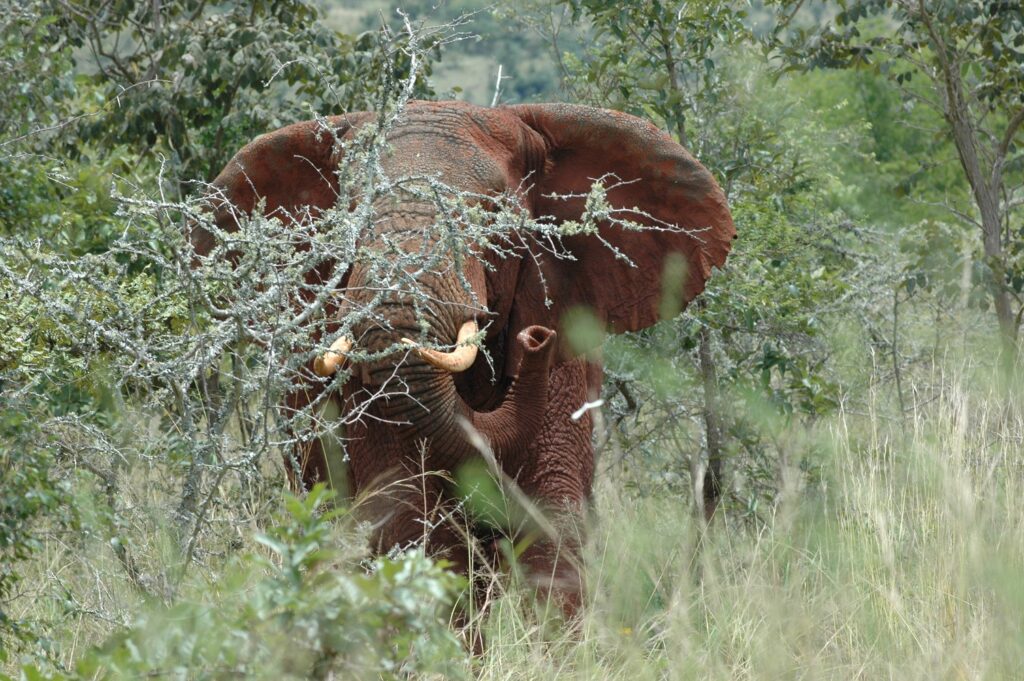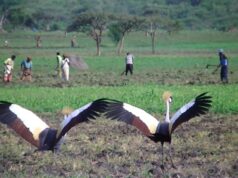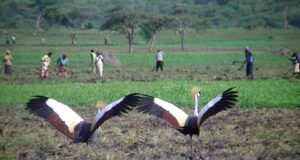
By Muhizi Olivier and Rwamapera Kelly
Ivory trafficking in the East African country Tanzania is slowly shifting its routes into Rwanda and Central Africa.
According to the authorities in both Rwanda and Tanzania, there is an increase in ivory trafficking between Tanzania and Rwanda than it was over five years ago, following Tanzania’s intensified crackdown on ivory trafficking since 2014.
Officials in Rwanda don’t have the exact number of people prosecuted for ivory trafficking because Rwanda handles ivory trafficking as other environmental crimes against endangered species of animals.
“We do not have specific statistics for ivory trafficking because our records have ivory trafficking mixed with all other crimes against animal endangered species but most ivory trafficking crimes have been committed from Tanzania especially since 2017” According to Faustin Nkusi, the spokesperson for Rwanda’s National Public Prosecution Authority ((NPPA).
The Tanzanian Directorate of Public Prosecution says that they have intensified crackdown on ivory trafficking through the Indian Ocean coast which has led some to resort to trafficking through other countries.
“We intensified the hunt for ivory traffickers since 2014 and have arrested nearly 2500 poachers since 2017 and dozens of the most notorious dealers in ivory trafficking,” says Sylvester Mwakitalu, Tanzania’s Director of Public Prosecution.
How ivory trafficking is done between Tanzania and Rwanda
Ivory trafficking between the countries involves crossing the deep, crocodile-infested swamp and the dirty flowing water of River Akagera as wide as about a mile.
This paper was able to talk to former convicts for ivory trafficking between the two countries and taxi drivers who transported the merchandise and look at court judgment of other convicts for ivory trafficking in Rwanda.
Damascene (not real name) in his 50s, a former convict of ivory trafficking residing in Eastern Rwanda told Hobe Magazine he had dealt with ivory trafficking for three months before he got arrested in 2016 and sentenced to four years.
The resident of Rwanda-Tanzania border areas was a smuggler of juices, vodkas and other domestic commodities from Tanzania into Rwanda before he added ivory trafficking.
“I was well conversant with smuggling merchandise from Tanzania to Rwanda through porous borders to avoid taxation, collaborating with Tanzanians for over 15 years”
But the intensified crackdown on smugglers made Damascene try retail shop in his home district before a former Tanzanian smuggler contacted him for a new ivory trafficking.

The man Damascene knew Mpambano had left smuggling and became a mechanic in Kigali but now he was promising him Rwf1m per 20kgs and paid him Rwf2m in advance to bring 80kgs.
“I knew there was money in ivory but the deal was that I did not have to look for who has or buys ivory. I had to pick and bring. I accepted because I trusted him” Damascene said.
Damascene started dealing in ivory, going to Kahama about 200 miles away from the border where Mpambano’s friends could pick him in their car and take him to different places Geita to wait for the Ivory to come.
“Two or three men could come to pick me at the border but most of the time I could find them at Kahama waiting for me at various places to take me to Geita where I could wait for the merchandise” Damascene said.
It could take two days of waiting before he was given the ivory, usually not more than 20 kilogrammes to avoid being too heavy in the water.
“They always had to wait for me in order to bring the ivory. It was the secure way. I could wait for two or three days at Geita before some other people brought ivory”
Damascene never faced the people who could bring the ivory at Geita and feared to engage a conversation about them and did not know why they could not just proceed from Geita to the Rwanda-Tanzania border.
“In such deals, you don’t ask who is who to avoid being suspected. We could move the ivory to Kahama until 11pm when we could start the journey to Rwanda”
With his leather bag of 20kg of ivory, Damascene could leave the car into thickets and jungles that lead to River Akagera without a light at around 3 am.
could enter the swamp on the Tanzania side of River Akagera until he reached the flowing water, swim across to the swamp at the other side, and emerge on land.
“It could take me 40 minutes to cross the river from Tanzania side to Rwanda and an hour of walking home to my banana plantation where I could hide the ivory”
After his fourth-round bringing ivory, and informing his boss Mpambano in Kigali about all the proceedings, he came to pick the “cassava” and to pay him the remaining Rwf2m to make Rwf4m ($4000) for the 80kg he had fetched.
“Mpambano came with another man I did not know. He even remained in the car. He paid me the remaining Rwf2m but they abruptly refused to take the ivory, telling me that they had been informed of insecurity”
Damascene kept the ivory in his banana plantation as his bosses left and promised to come back in two days but they did not.
After three days, Damascene called Mpambano in the morning but he could not answer. He called the second time in the afternoon but the phone was off.
On the same day in the evening, a group of five people including a woman came and told Damascene that they had been sent by Mpambano to pick the ‘cassava’”
“I was somehow hesitant but they convinced me that that’s how they play the deals,” he said adding that “I had my payment, so, had no loss if it had been taken I really wanted the ivory to be taken away for my security. so, I accepted”
He brought the ivory from the banana plantation and piled the 80kgs there then they arrested him.
During court proceedings, Damascene argued that he never dealt in ivory but one Mpambano could bring the ivory and keep it at his home where he could pick it.
He was sentenced to four years for being an accomplice in ivory trafficking while Mpambano has disappeared up to now.
There are two main places where Damascene told this paper where they used to pass in Gahara sector in Kirehe District which borders Tanzania.
This paper reached this remote area that has no legitimate border crossings but porous borders which are also guarded by the military on Rwanda’s side.
In Tanzania, a former journalist there led us to possible people in the Geita whom he supposed would know about ivory trafficking but it was a miss.
However, Kassim (not real name) a former taxi driver at Kahama who now owns a transport company in Dar-es-Salam admitted to this paper that he used to transport ivory for clients from Tanzania to the Rusumo border with Rwanda.
“They could not tell that they were carrying ivory but as a driver, I could easily know because they normally wanted to rent the car for more than three days and willing to pay even 10 times higher than we could charge,” he said.
Kassim admitted that he made much money from the transport of ivory in the 2017 dry season June, July, and August and ended up owning four cars to start a transport company in Dar.
“It’s a risky deal. It’s rare to deal in ivory for a year before you get caught. Even the people who could give us tasks of transporting their ivory could be changing all the time” he said.
Kassim said that he was only able to know that poachers could kill elephants from Burigi and Biharamulo areas and sell the ivory and tusks to traffickers from Kahama.
Today, the Tanzanian government merged three game reserves in the west Burigi, Biharamulo and Kimisi to form the Burigi-Chato Game Park that covers 4,707 sq km from Lake Victoria to Rwanda to the border with Rwanda, making it the 4th largest in Tanzania.
This story was produced in partnership with Henry NXumalo Foundation













